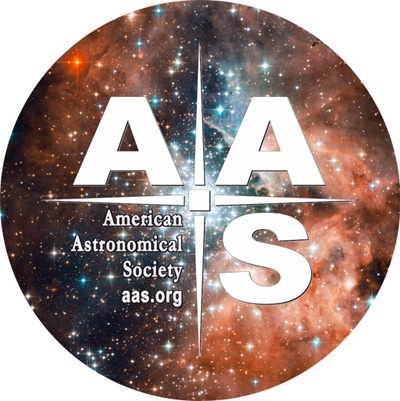17 February 2020
Susanna Kohler

Artist’s impression of one of the two stars in the FU Orionis binary system, surrounded by an accreting disk of material. What has caused this star — and others like it — to dramatically brighten? [NASA/JPL-Caltech]
Some young stars seem to spend a brief portion of their lives undergoing dramatic, flaring outbursts. A new study has used the Atacama Large Millimeter/submillimeter Array (ALMA) in Chile to get the closest look yet at one of these systems — possibly identifying the cause of the flares.


Artist’s impression of a young star throwing a temper tantrum as it suddenly increases its accretion rate and flares. [Caltech/T. Pyle (IPAC)]
Young Stellar Temper Tantrums
FU Orionis (FU Ori, for short) objects are young, pre-main-sequence stars that grow suddenly brighter — by several magnitudes! — over the span of perhaps a year. These flaring states can last on the order of decades, and they’re thought to be related to a period of increased accretion onto the star during its early years. A star may gain a significant portion of its final mass during these events.
Beyond this general picture, there’s much we don’t understand about how or why this increase in accretion occurs. Does every star undergo a FU Ori phase early in its lifetime, accumulating extra mass in spurts and brightening each time it does? Or do only some stars behave this way? What causes the change in accretion rate? What ends this phase?
The first step to answering some of these questions is to obtain high-resolution images of FU Ori objects so that we can better explore their structure and behavior. In a new study, a team of scientists led by Sebastián Pérez (University of Santiago, Chile; University of Chile) has used ALMA to capture a detailed look at the archetypal FU Ori system for which these objects were named.
Signs of Interaction

ALMA continuum observations show the dust of the two disks surrounding the binary stars of FU Orionis. Each disk is about 11 AU in radius. [Pérez et al. 2020]
FU Orionis is a binary pair of young stars that lies roughly 1,360 light-years away in the constellation of Orion. Pérez and collaborators’ ALMA observations of the system resolved, for the first time, the disks of accreting dust surrounding each of the young stars. Modeling of these disks allowed the authors to infer that they are roughly 11 AU in radius and their separation is perhaps 250 AU.
Observations of the gas in the disks reveal its kinematics, demonstrating that the rotation of each disk is somewhat asymmetric and skewed. The authors propose that this indicates some sort of close encounter for the disks — perhaps the flyby of another star within this crowded star-forming region, or possibly even the direct interaction of the two disks of the binary with each other.
An elongated arc of gas may connect the two components, further strengthening the argument that the two disks are interacting. And close passes between the disks of a binary or perturbations from a flyby could easily increase the accretion rate onto the stars, fueling the FU Ori outburst that we now observe.
Several other FU Ori systems are in known binaries, providing additional targets that we can follow up with to test whether disk interactions can truly explain these objects’ sudden, dramatic flares. Meanwhile, ALMA continues to play an important role in helping us to explore how stars form and evolve.
Citation
“Resolving the FU Orionis System with ALMA: Interacting Twin Disks?,” Sebastián Pérez et al 2020 ApJ 889 59.
https://iopscience.iop.org/article/10.3847/1538-4357/ab5c1b
See the full article here .

five-ways-keep-your-child-safe-school-shootings
Please help promote STEM in your local schools.

AAS Mission and Vision Statement
The mission of the American Astronomical Society is to enhance and share humanity’s scientific understanding of the Universe.
The Society, through its publications, disseminates and archives the results of astronomical research. The Society also communicates and explains our understanding of the universe to the public.
The Society facilitates and strengthens the interactions among members through professional meetings and other means. The Society supports member divisions representing specialized research and astronomical interests.
The Society represents the goals of its community of members to the nation and the world. The Society also works with other scientific and educational societies to promote the advancement of science.
The Society, through its members, trains, mentors and supports the next generation of astronomers. The Society supports and promotes increased participation of historically underrepresented groups in astronomy.
The Society assists its members to develop their skills in the fields of education and public outreach at all levels. The Society promotes broad interest in astronomy, which enhances science literacy and leads many to careers in science and engineering.
Adopted June 7, 2009
